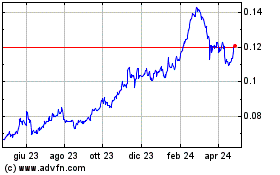

Key takeaways
-
US crypto investors must file their 2024 tax returns by April
15, 2025, ensuring all crypto transactions are accurately reported
to the IRS.
-
Crypto held for less than a year is taxed as ordinary income
(10%-37%), while holdings over a year qualify for lower capital
gains rates (0%, 15%, or 20%).
-
Selling, trading, or spending crypto triggers taxes, while
holding or transferring between wallets does not.
-
Mining, staking, airdrops, and crypto payments are taxed as
income at applicable rates.
The world of cryptocurrencies can indeed be an exciting space
for investors, but as the tax season approaches, many US investors
find themselves grappling with confusion and uncertainty.
With the upcoming tax filing deadline of April 15, 2025, it’s a
critical time to get a handle on crypto tax obligations. Ask most
US crypto investors, and they’ll likely tell you that figuring out
what transactions trigger a taxable event feels like navigating a
maze.
Understanding various aspects of tax
filing is crucial for accurately filing taxes, avoiding
penalties and staying compliant with the Internal Revenue Service
(IRS). This article breaks down key elements like tax brackets,
rates, exemptions and other critical details.
How does the IRS tax crypto?
The Internal Revenue Service, the agency responsible for
collecting US federal taxes, treats cryptocurrencies as property
for tax purposes. You pay taxes on gains realized when selling,
trading or disposing of cryptocurrencies. For short-term capital
gains (held less than a year), you pay taxes at the rates of
10%–37%, depending on your income bracket.
Long-term capital gains (assets held for over a year) benefit
from reduced rates of 0%, 15% or 20%, also based on your taxable
income.
When you dispose of cryptocurrency for more than its purchase
price, you generate a capital gain. Conversely, selling below the
purchase price results in a capital loss. You must
report both your
capital gains and losses for the year in which the transaction
occurs, with gains being taxable and losses potentially offsetting
gains to reduce your tax liability.
With the upcoming April 15, 2025, deadline for
filing 2024 tax
returns, US crypto investors need to ensure these transactions
are accurately tracked and reported.
To illustrate, suppose you purchased Ether
(ETH) worth $1,000 in 2023 and sold it
after a year in 2024 for $1,200, netting a $200 profit. The IRS
would tax that $200 as a long-term capital gain, applying the
appropriate rate based on your 2024 income.
Taxes are categorized as capital gains tax or income tax,
depending on the type of transactions:
-
Capital gains tax: Applies to selling crypto,
using crypto to purchase goods or services, or trading one
cryptocurrency for another.
-
Income tax: Applies to crypto earned through
mining,
staking,
receiving it as payment for work, or referral bonuses from
exchanges.
These distinctions are crucial for accurate reporting by the
April 15 deadline. Gains are taxed, while losses can help offset
taxable income, so detailed record-keeping is a must.
Did you know? In Australia,
gifting cryptocurrency triggers a capital gains tax (CGT) event.
The giver may need to report gains or losses based on the asset’s
market value at the time of transfer, though certain gifts — like
those between spouses — may qualify for exemptions. While this
differs from US rules, it highlights how crypto taxation varies
globally.
How crypto tax rates work in the US
In the US, your crypto tax rate depends on your income and how
long you’ve held the cryptocurrency. Long-term capital gains tax
rates range from 0% to 20%, and short-term rates align with
ordinary income tax rates of 10%–37%. Transferring crypto between
your own wallets or selling it at a loss doesn’t trigger a tax
liability.
You only owe taxes when you sell your crypto, whether for cash
or for any other cryptocurrency. Consider this example: Suppose you
bought crypto for $1,000 in 2024, and by 2025, its value rose to
$2,000. If you don’t sell, no tax is due — unrealized gains aren’t
taxable.
If you sell cryptocurrency after holding it for a year or less,
your profits are subject to short-term capital gains tax. These
gains are taxed as ordinary income, meaning they are added to your
total taxable earnings for the year.
Tax rates are progressive, based on income brackets, so
different portions of your income are taxed at different rates. For
instance, a single filer in 2025 pays 10% on the first $11,000 of
taxable income and 12% on income up to $44,725. Short-term rates
are higher than long-term rates, so timing your sales can
significantly impact your tax bill.
Understanding crypto capital gains tax in the US
If you sell
cryptocurrency after holding it for a year or less, your
profits are subject to short-term capital gains tax. These gains
are treated as ordinary income and added to your total taxable
earnings for the year. Since tax rates are based on income
brackets, different portions of your earnings are taxed at
different rates, as explained above.
2024–2025 federal income tax brackets for crypto earnings
Here are the federal income tax rates for the 2024–2025 tax
year. You apply the 2024 tax brackets to income earned in the 2024
calendar year, reported on tax returns filed in 2025.

Long-term capital gains tax for crypto earned in 2024
You pay long-term capital gains tax if you sell cryptocurrency
after holding it for more than a year. Unlike short-term gains,
these aren’t taxed as ordinary income. Instead, tax rates are based
on your total taxable income and filing status. Long-term capital
gains tax rates are 0%, 15% or 20%, making them lower than
short-term rates. Holding crypto longer can reduce your tax burden
significantly.
Here is a table outlining long-term crypto capital gains tax for
the calendar year 2024. These rates are applicable when filing tax
returns in 2025.

2024–2025 standard deduction: Reduce your crypto taxable
income
The standard deduction is the portion of your income that’s
exempt from federal taxes before tax rates are applied, reducing
your taxable income.
Here is a table regarding tax deductions in the calendar year
2024. These amounts are applicable when filing for tax returns in
2025.

How are crypto airdrops taxed in the US?
In the US, crypto
airdrops are treated as ordinary income by the IRS and taxed at
the time they come under the taxpayer’s full control. The taxable
amount is based on the tokens’ fair market value at that moment,
even if the taxpayer didn’t request them. Later, selling or trading
those tokens may trigger capital gains tax, depending on the price
difference between receipt and disposal.
The taxable event hinges on control: If tokens automatically
appear in a taxpayer’s
wallet, the income is typically recognized upon arrival. If the
tokens require manual claiming (e.g., through a transaction), the
taxable event occurs when the claim is completed. Either way, the
fair market value at that point determines the income reported.
When the taxpayer sells or trades the airdropped tokens, they
incur a capital gain or loss, calculated as the difference between
the value at receipt (the basis) and the value at sale or trade.
Moreover, the holding periods matter: If sold within a year, gains
are taxed at ordinary income rates (10%–37%, based on income
brackets). If held longer than a year, gains qualify for lower
long-term capital gains rates (0%, 15% or 20%, depending on
income). Proper tracking of receipt dates and values is essential
for accurate tax reporting.
Crypto gifting rules and tax implications in the US
In the US, gifting cryptocurrency is generally not a taxable
event for either the giver or the recipient, meaning no immediate
tax is owed. However, specific thresholds and reporting
requirements must be followed to stay compliant with IRS
rules.
For the 2024 tax year (filed by April 15, 2025), if the total
value of crypto gifts to a single recipient exceeds $18,000, the
giver must file a gift tax return using Form 709.
When the recipient eventually sells the gifted cryptocurrency,
they’ll calculate capital gains or losses based on the giver’s
original cost basis — the price the giver paid for the crypto. If
this cost basis isn’t documented or available, the recipient may
need to assume a basis of $0, which could increase their taxable
gain upon sale. To avoid complications, both parties should keep
detailed records of the gift’s fair market value at the time of
transfer and the giver’s original cost basis.
Did you know? In the UK, giving
cryptocurrency as a gift may result in capital gains tax for the
giver, except for gifts to spouses or civil partners. Additionally,
inheritance tax could apply if the giver dies within seven years of
the gift.
Essential forms for filing crypto taxes in 2024
With the April 15, 2025, deadline nearing, here are the key
forms for reporting 2024 crypto transactions:
-
Form 8949: For reporting capital gains and
losses from crypto sales, trades and disposals. Each transaction
must be listed individually.
-
Schedule D (Form 1040):
Summarizes total
capital gains and losses from Form 8949; used for calculating
taxable income.
-
Schedule 1 (Form 1040):
Reports additional income,
including staking rewards, airdrops and hard forks,
if classified as taxable income.
-
Schedule C (Form 1040): Used by self-employed
individuals or businesses to report crypto-related income from
mining, consulting or freelance work.
-
Form 1099-MISC: Issued for staking,
mining or payment income over $600
-
Form 1040: The main return form to combine
income, deductions and tax liability.
-
FBAR (FinCEN Form 114): File separately if
foreign crypto accounts exceeded $10,000 in 2024.

Step-by-step guide to filing crypto taxes for the 2024–2025 tax
season
Here’s how to file, step by step, leveraging the detailed tax
rates and forms outlined above.
Step 1: Gather all crypto transaction records
Collect records for every 2024 crypto transaction:
-
Dates of buying, selling, trading or receiving crypto
-
Amounts (e.g., 0.5 Bitcoin) and US dollar fair market value
(FMV) at the time
-
Cost basis (what you paid, including fees) and proceeds (what
you received).
To ensure complete records, pull data from wallets, exchanges
(e.g., Coinbase) and blockchain explorers. Export transaction
histories or CSVs, and note staking rewards, airdrops or mining
income separately with their FMV on receipt.
Step 2: Identify taxable events
Pinpoint which 2024 actions trigger taxes:
-
Taxable: Selling crypto for cash/stablecoins,
trading crypto, spending crypto or earning it (mining, staking,
airdrops).
-
Non-taxable: Buying and holding with USD,
moving crypto between your wallets, gifting up to $18,000 per
recipient.
Classify each taxable event as short-term (≤1 year) or long-term
(>1 year) for rate purposes.
Step 3: Calculate capital gains and losses
For taxable sales or trades:
-
Formula: Proceeds (FMV at disposal) - Cost
Basis = Gain/Loss
-
Example: Bought 1 Ether
(ETH) for $2,000 in May 2024, sold for
$2,500 in November 2024 = $500 short-term gain.
Use first-in, first-out or specific identification for cost
basis (be consistent). Sum your net gains/losses. See the “2024
Federal Income Tax Brackets” section for how these are taxed.
Step 4: Calculate crypto income
For earnings (mining, staking, airdrops):
-
Record FMV in USD when received (e.g., 10 Cardano worth $5 on
June 1, 2024 = $5 income).
-
Add to your other 2024 income to set your tax bracket, detailed
in the sections above.
Step 5: Apply the 2024 standard deduction
Lower your taxable income with the standard deduction:
-
Single: $14,600
-
Married filing jointly: $29,200
-
Head of household: $21,900
Subtract this from total income (including short-term gains and
crypto income). Long-term gains are taxed separately.
Step 6: Determine your tax rates
Apply rates to your gains and income (refer to “How Crypto Tax
Rates Work in 2024”):
-
Short-term gains and income: Ordinary rates
(10%–37%).
-
Long-term gains: 0%, 15% or 20%, based on
income.
-
Offset gains with losses (up to $3,000 net loss against other
income; carry forward excess).
Step 7: Complete the necessary tax forms
Fill out the required IRS forms (see “Essential Forms for Filing
Crypto Taxes in 2024”):
-
List capital gains/losses and income on Form 8949, Schedule D
and Schedule 1 as applicable.
-
Use Schedule C if self-employed (e.g., mining business).
-
Combine everything on Form 1040.
-
Check Form 1099-MISC if received and file FBAR for foreign
accounts over $10,000.
Step 8: File your return by April 15, 2025
-
Submit via IRS e-file or mail, postmarked by April 15,
2025.
-
Need more time? File Form 4868 for an extension to Oct. 15,
2025, but pay estimated taxes by April 15 to avoid penalties.
Step 9: Pay any taxes owed
Estimate your tax from Step 6, then pay via IRS Direct Pay or
check. Late payments after April 15 incur a 0.5% monthly penalty
plus interest.
Step 10: Keep records for audits
Store transaction records and forms for three to six years. The
IRS is intensifying crypto scrutiny — be prepared.
Did you know? In Canada, giving
cryptocurrency as a gift is generally considered a taxable
disposition, requiring the giver to determine and report any
capital gains or losses.
Important dates and deadlines for 2024–2025 tax season and
beyond
Here are important dates regarding the 2024–2025 tax season and
2025 transition:
2024 tax season
-
Jan. 31, 2025: Some exchanges may issue
voluntary 1099s (e.g., 1099-MISC).
-
April 15, 2025: File taxes on crypto earned in
2024.
2025 transition
-
Jan. 1, 2025: Form 1099-DA reporting
begins.
-
Dec. 31, 2025: Safe harbor ends for adjusting
universal cost basis.
-
Jan. 31, 2026: Receive Form 1099-DA for 2025
trades.
Quarterly estimates
-
June 15, Sept. 15, 2025, etc., for active traders.
New IRS crypto tax rules for 2025: What you need to know
The IRS introduced new rules for tax filing and reporting aimed
at US cryptocurrency taxpayers, but these regulations have
encountered significant pushback. Both the US Senate and House of
Representatives voted to repeal them under the Congressional Review
Act (CRA), and President Donald Trump has signaled support for the
rollback. Despite this uncertainty, understanding these rules
remains crucial, especially with deadlines
looming in 2025.
A core component of the new rules is calculating taxes using a
cost basis — the original amount invested in an asset, including
fees or commissions. Accurately tracking cost basis is vital for
proper tax reporting and prevents double taxation on reinvested
earnings. It’s the starting point for determining capital gains or
losses.
Under the updated IRS guidelines, crypto investors must now
track the cost basis (original purchase price) separately for each
account or wallet, moving away from a universal tracking approach.
This requires recording the purchase date, acquisition cost and
specific transaction details.
The rules also mandate specific identification for every digital
asset sale, requiring taxpayers to report the exact purchase date,
quantity and cost of the assets sold. If this information isn’t
provided, the IRS defaults to the first-in,
first-out (FIFO) method — selling your earliest coins first —
which could inflate taxable gains if those initial purchases had
lower costs.
For taxpayers previously using a universal cost basis method,
the IRS requires reallocating their basis across all accounts or
wallets accurately by Dec. 31, 2025, to comply with these
standards.
Form 1099-DA: What to expect for crypto taxes in 2025–2026
As of March 27, 2025, Form 1099-DA is set to become a pivotal
tool for the 2025–2026 tax season, simplifying how cryptocurrency
transactions are reported in the US. This new form, tailored
specifically for digital assets, will be issued by exchanges to
both taxpayers and the IRS, providing a detailed breakdown of
activities like sales, trades and other taxable crypto events from
2025.
It’s designed to streamline compliance and bolster IRS
oversight, reflecting the agency’s growing focus on tracking
digital asset income. For taxpayers, it promises easier, more
accurate reporting, while exchanges take on a larger role in tax
documentation.
For the 2024 tax year — due by April 15, 2025 — this form isn’t
yet available; filers must still rely on existing forms like Form
1099-MISC until Form 1099-DA officially takes effect for 2025
earnings.
IRS crypto tax penalties: What happens if you don’t report or
under-report in 2024?
US taxpayers who fail to meet their tax obligations may face
penalties from the IRS. When tax obligations go unmet, the IRS
sends a notice or letter detailing the penalty, its reason (e.g.,
late filing, non-payment or inaccurate reporting) and your next
steps.
Penalties vary:
-
Late filing or non-payment can incur fines up to 25% of the
unpaid tax, plus interest that accrues until settled.
-
Other triggers — like bounced checks or fraudulent claims — add
further costs, and the IRS may launch an audit to scrutinize your
filings.
-
Individuals may face penalties of up to $100,000 and criminal
sanctions, including imprisonment for up to five years.
-
Corporations can be fined up to $500,000.
These stakes are high, especially as the IRS ramps up crypto
enforcement in 2024. To dodge these consequences, double-check any
notice for accuracy and act fast: Request a filing extension with
Form 4868 if needed (due by April 15, 2025), arrange a payment plan
for unaffordable penalties, or dispute the penalty if you believe
it’s unjustified. Prompt action can save you from escalating costs
and legal headaches.
...
Continue reading How to file crypto taxes in the US
(2024–2025 tax season)
The post
How to file crypto taxes in the US (2024–2025 tax
season) appeared first on
CoinTelegraph.
Grafico Azioni TRON (COIN:TRXUSD)
Storico
Da Mar 2025 a Apr 2025

Grafico Azioni TRON (COIN:TRXUSD)
Storico
Da Apr 2024 a Apr 2025
